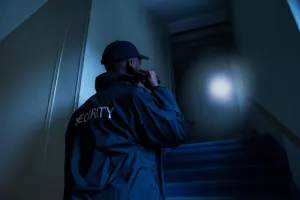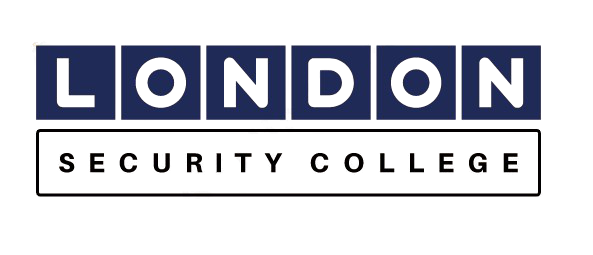Poor Lighting and Visibility Issues
As a security officer, your ability to see clearly and act quickly is essential for keeping people safe. Poor lighting and visibility issues aren’t just an inconvenience — they are a serious health and safety risk and one of the hidden causes behind slips, trips, and falls.
From dimly lit stairwells to shadowed car parks, these hazards can increase the chance of accidents, compromise security, and place you — and your employer — at risk of non-compliance with health and safety obligations.
Why Lighting Matters
Lighting directly affects both safety and security. According to the Health and Safety Executive (HSE), poor lighting is a contributing factor in a significant number of workplace slips and trips every year.
Inadequate lighting makes hazards such as wet patches, loose cables, or uneven flooring harder to spot.
Poor visibility can reduce reaction times, increasing the chance of accidents.
For employers, failing to provide adequate lighting can breach duties under the Health and Safety at Work Act 1974 and Workplace (Health, Safety and Welfare) Regulations 1992.
Standards such as BS 7499 (Guarding Services) and NSI Guarding Gold emphasise that officers must remain alert to environmental risks, including lighting issues, as part of maintaining a safe workplace.
Tip: Remember — good lighting isn’t just about seeing clearly. It’s about making hazards obvious before they cause harm.
Common Poor Lighting Hazards
Security officers often patrol areas where lighting is less than ideal. Be alert for:
Dim stairwells and corridors – where trip hazards can easily go unnoticed.
Car parks and external areas at night – uneven surfaces or ice patches become hard to detect.
Emergency exits – if lighting fails, escape routes may be compromised.
Shadows and glare – both can hide or distort hazards.
Temporary outages – bulbs blowing or power cuts creating sudden risks.

Tip: When you patrol, don’t just assume lights are fine. Test them, check for flickering, and always log any faults.
Real-World Example
You are on night duty at a retail park. The car park floodlights fail in one section, leaving the pathway in near darkness.
Correct response: You immediately report the lighting fault, restrict access to the area with cones or tape, and alert visitors to use an alternative route. You also record the incident in the site log.
If ignored: A customer trips over a kerb in the dark, suffers a head injury, and files a claim. The employer faces HSE investigation and reputational damage. You could also face disciplinary questions for not taking action.
Result: By acting swiftly, you prevent injury, protect the business, and demonstrate professionalism.
Consequences of inaction: Injury, legal claims, loss of client confidence, and possible impact on your SIA licence.
Spotting Visibility Risks on Patrol
Lighting isn’t only about brightness — it’s about visibility. Even well-lit areas can present dangers if shadows or glare distort what you see.
Shadows can hide steps, cables, or spillages.
Glare from windows or headlights can temporarily “blind” you to hazards.
Sudden changes (moving from bright to dim areas) can delay your reaction time.
Tip: Adjust your pace when moving between areas with different lighting — give your eyes time to adapt before you continue scanning for hazards.
Tools and Technology that Support Good Visibility
Security officers should make use of tools and resources provided by employers to manage lighting and visibility hazards:
Portable torches for areas without permanent lighting.
Incident reporting apps or logbooks to record faults quickly.
Emergency lighting systems that must be tested regularly.
CCTV monitoring to identify blind spots caused by poor lighting.
Tip: Always check your torch before a shift. A simple equipment check can prevent you being caught unprepared in a power cut or during a night patrol.
Working with Employers to Fix Lighting Issues
Employers are legally required to provide safe lighting systems, but you play a crucial role in identifying and escalating problems:
Report faults immediately — don’t wait until “someone else” mentions it.
Escalate urgent issues like failed exit signs or dark stairwells straight to supervisors.
Support contractors when maintenance is carried out, ensuring the area is safe while work takes place.
Feedback during reviews — let management know which areas are repeat offenders so long-term fixes can be made.
Tip: Treat lighting faults the same way you would treat a broken lock — both affect safety, and both need swift action.
Consequences of Neglecting Poor Lighting
For Employers: Legal action, fines, increased insurance claims, and failure to meet compliance standards.
For Security Officers: Loss of credibility, risk to your licence, or disciplinary action if neglect is proven.
For Staff and the Public: Risk of injury, reduced confidence in site safety, and reputational damage to the business.
Tip: Always think “Would I let my family walk here safely?” If the answer is no, it’s your responsibility to act.
What Security Officers Should Keep in Mind
Lighting and visibility are essentials — not optional extras.
Employers provide the systems, but you are the one on the ground making sure they work in practice.
Report lighting faults promptly — treat them with the same urgency as broken locks or alarms.
Be proactive: Spotting and addressing lighting issues demonstrates compliance with HSE guidance, BSI standards, and NSI Guarding Gold requirements.
Final Tip: Each time you report or act on a lighting issue, you’re not just preventing accidents — you’re proving your professionalism and protecting your career.

